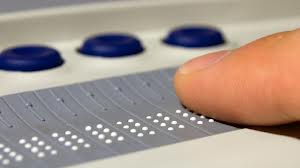
Assistive Technology
What is Assistive Technology (AT)?
According to the United States Assistive Technology Act of 1998, assistive technology (also called adaptive or access technology) refers to any “product, device, or equipment, whether acquired commercially, modified or customized, that is used to maintain, increase, or improve the functional capabilities of individuals with disabilities.” Common computer-related assistive technology products include screen magnifiers, large-key keyboards, refreshable braille displays, alternative input devices such as touch screen displays, over-sized trackballs and joysticks, speech recognition programs, and text readers.
Why do we need AT?
As a society, people tend to collectively “decide” to do things in ways that work for the majority, like sharing knowledge using writing methods that require the hands and the eyes to use. However, just because something works for the majority doesn’t mean it works for everyone. AT is often invented to fill the gap and allow a larger number of people to perform a task independently.
Does this mean AT does the work for the person?
Interesting AT history
Many devices that we consider common today had their start as AT, or at least, attempts at being AT.
- The typewriter (which was actually independently invented by many different people around the world at different times) was created in at least one case by someone trying to help a blind person learn to write so that sighted people could read it.
- Alexander Graham Bell originally worked with methods for teaching deaf people to speak; this technological research ultimately informed his invention of the first practical version of the telephone.
- Speech recognition has been used for many years by people who cannot use their hands to operate a computer. Common applications today include hands-free control of smartphones, and voice-response systems in telephone menus.